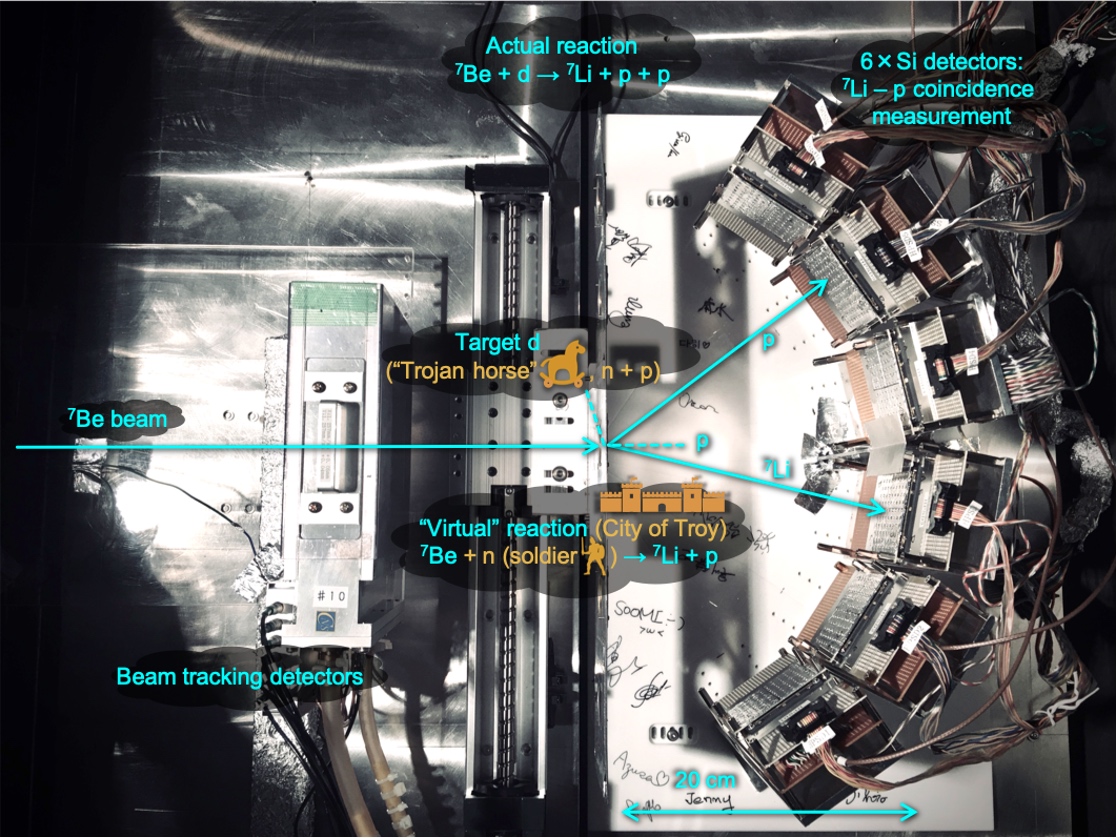Toward a solution to the missing lithium problem
If there is something missing that should be there, what is the cause? ― It has been known for decades that there is a significant discrepancy between the theoretical and observed lithium abundance in the early universe; the primordial 7Li abundance is overestimated and/or underobserved by a factor of 3 – 4. Such an inconsistency is called the “cosmological lithium problem (CLP)”, although the standard Big Bang theory is known as a very “successful” model in comparison with most of other observational facts.
Researchers now found experimental evidence that the theoretical 7Li abundance should be corrected downward by about 10%. This is not yet a complete solution, but a necessary contribution for the further theoretical approaches to the CLP solution with slightly less dauting tasks.
The first lithium is created during the Big Bang nucleosynthesis (BBN) period as well as hydrogen and helium from a jumble of protons and neutrons. The BBN is a complex network of nuclear reactions, and the abundance of a nuclide depends not only on the reaction directly to produce it but also on the reaction to destroy it and often on other reactions along the way. For example, the abundance of 7Li is mainly dominated by the production and reduction processes of 7Be. This falls in the context of the primordial nucleosynthesis studied performed by the ASFIN group and in particular to the investigations on 7Be destruction which has been examined in several papers.
Project Assistant Professor Seiya Hayakawa from the Center for Nuclear Study – the University of Tokyo collaborating with the nuclear astrophysics group ASFIN of the INFN – LNS, Sungkyunkwan University, and others leads an experimental project aiming at measuring the nuclear reactions responsible for the 7Be reduction in BBN. Recently, there are several attempts to measure these reactions 7Be(n, p)7Li and 7Be(n, α)4He by other research groups, but the data in the BBN-relevant energy region were still somewhat scarce.
These reactions are very difficult to observe directly since both 7Be and neutron are unstable. The research group proposed to use deuteron as a target instead of a bare neutron, and a 7Be beam produced by the CRIB (Center-for-Nuclear-Study Radioactive Ion Beam separator, https://www.cns.s.u-tokyo.ac.jp/crib/crib-new/home-en/index.html). This is a unique technique known as the Trojan Horse method, developed by the nuclear astrophysics group at INFN – LNS. By this method, the deuteron is like the Trojan horse in Greek myth, and the neutron is the soldier who sneaks into the impregnable city of Troy, namely, the reactions of interest, 7Be(n, p)7Li and 7Be(n, α)4He. The experimental result shows a significant contribution of the transition to the first excited state of 7Li for the first time, which offers a further 7Be reduction during the BBN and ultimately less 7Li abundance by about 10%.

Experimental setup and conceptual diagram of the Trojan Horse method
Link to the original paper: https://iopscience.iop.org/article/10.3847/2041-8213/ac061f
Press release of The University of Tokyo (in Japanese): https://www.s.u-tokyo.ac.jp/ja/info/7456/
Press release of The University of Tokyo (in English): https://www.u-tokyo.ac.jp/focus/en/press/z0508_00184.html
For more details:
Seiya Hayakawa
Center for Nuclear Study, The University of Tokyo
Email: This email address is being protected from spambots. You need JavaScript enabled to view it.
Marco La Cognata
INFN – LNS
Email: This email address is being protected from spambots. You need JavaScript enabled to view it.